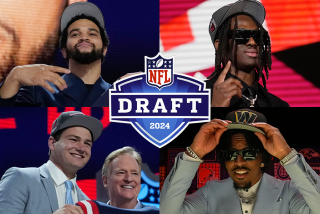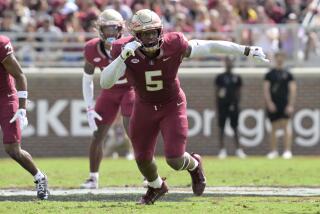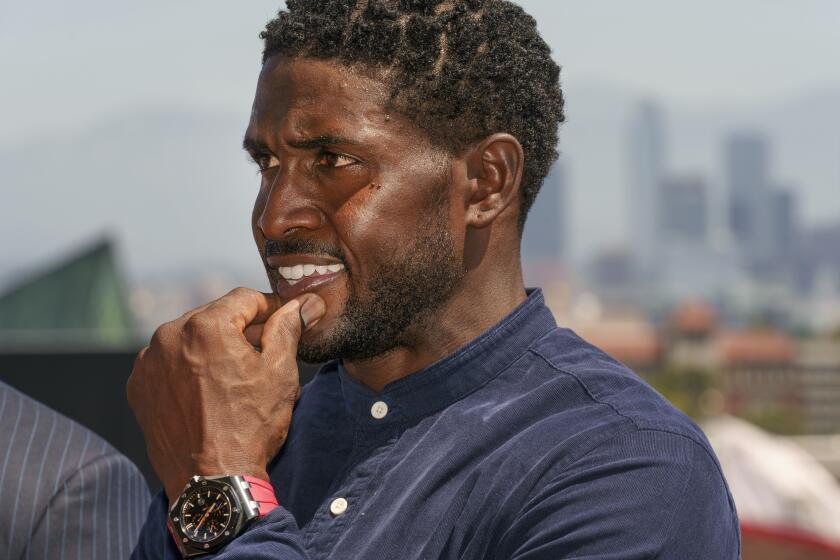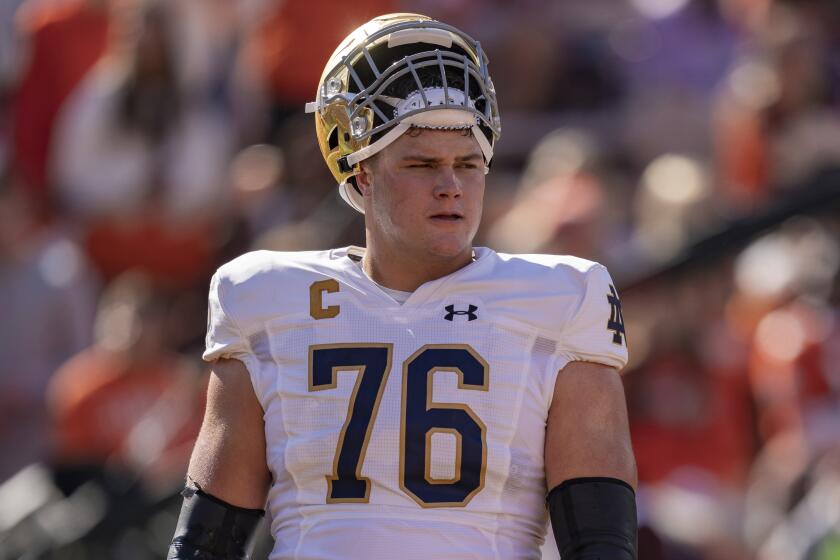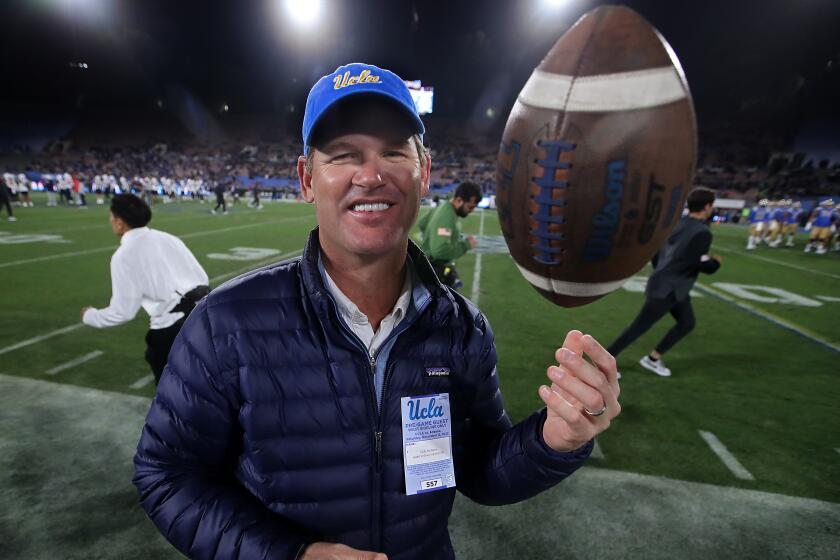Ask Sam Farmer: Why do NFL QBs point to opposing players at the line?
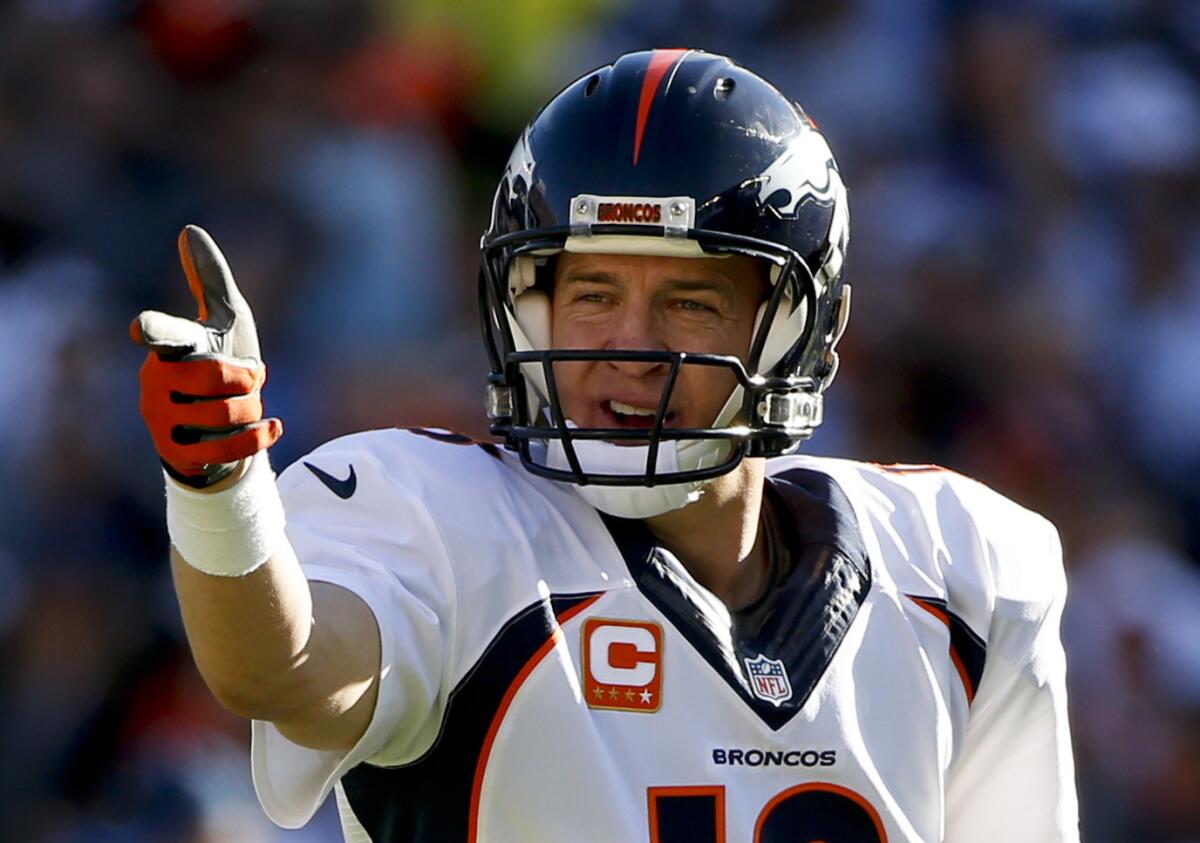
Have a question about the NFL? Ask Times NFL writer Sam Farmer, and he will answer as many as he can online and in the Sunday editions of the newspaper throughout the season. Email questions to: sam.farmer@latimes.com.
Question: My question is about the finger pointing at certain members of the opposing team that many quarterbacks do just before the ball is snapped. Why do they do that? Does it affect the play at all?
Patrick Read
Riverside
Farmer: Every quarterback is a traffic cop before the snap, directing traffic this way and that. Invariably, you’ll see him point to a linebacker just before the ball is snapped and, calling that player by number and identifying him as the “Mike,” shorthand for middle linebacker. So what’s that all about?
Here’s former NFL quarterback Rich Gannon, the league’s most valuable player in 2002, to explain:
“You’ve got five offensive linemen to block five big bodies. In passing situations, whether it’s in a base defense or their nickel defense, most teams play some form of four down linemen. So when you make that ‘Mike’ declaration as a quarterback, you’re simply telling everybody — but particularly the five offensive linemen — ‘I want you to block the four big men, and the Mike.’ When you declare who the Mike is, then that tells the back in the backfield who to block. It might be his assignment to block the first player to the right of the Mike, or maybe the first player to the left of the Mike. So he scans the field and looks for that player to block.
The ‘Mike’ declaration basically defines your protection, and it allows everybody — receivers, remaining backs, whoever — to know who they have to pick up or what they need to do.”
Question: Is there some reason that most special teams let the ball hit the ground before trying to down it inside the five-yard line? Many times it winds up taking an erratic bounce into the end zone when the safer play would be for the defender to catch it in the air and set it down on the ground.
Joel Koury
Santa Monica
Farmer: Retired All-Pro punter Darren Bennett agrees wholeheartedly:
“It’s the most frustrating thing for a punter to watch a punt that could have been downed at the five-yard line go into the end zone. We try and teach the gunners — some guys call them flyers, the outside guys — that the five-yard line’s great, seven-yard line’s great, 10-yard line’s great, way better than a touchback. Sometimes what these guys do is try to do the highlight reel downing of the ball on the half-yard line. We’ll take the five over the half-yard line even, because the risk of it going into the end zone is increased if you’re letting it roll to the five.
“Now if the ball’s dying and you can see that it’s going to sit down, some of the guys are very experienced and they do down it on the half-yard line. But if you watch [San Diego’s] Mike Scifres down here with Darrell Stuckey, Mike will hit a pooch punt where he actually directly aims at the five, and Darrell just goes down and catches the ball. They’re playing catch with each other. I’ll take the five all day, rather than putting it in the lap of the gods to go into the end zone.”
More to Read
Get our high school sports newsletter
Prep Rally is devoted to the SoCal high school sports experience, bringing you scores, stories and a behind-the-scenes look at what makes prep sports so popular.
You may occasionally receive promotional content from the Los Angeles Times.

